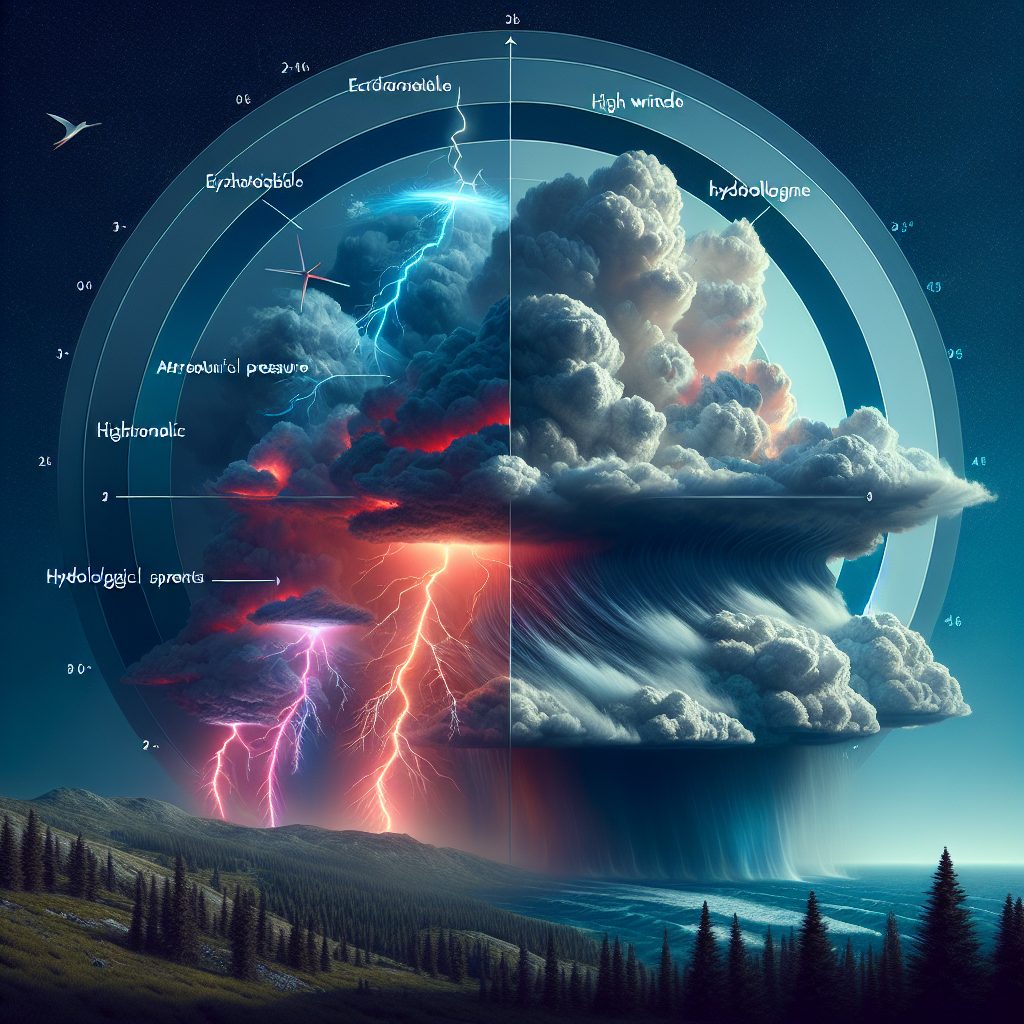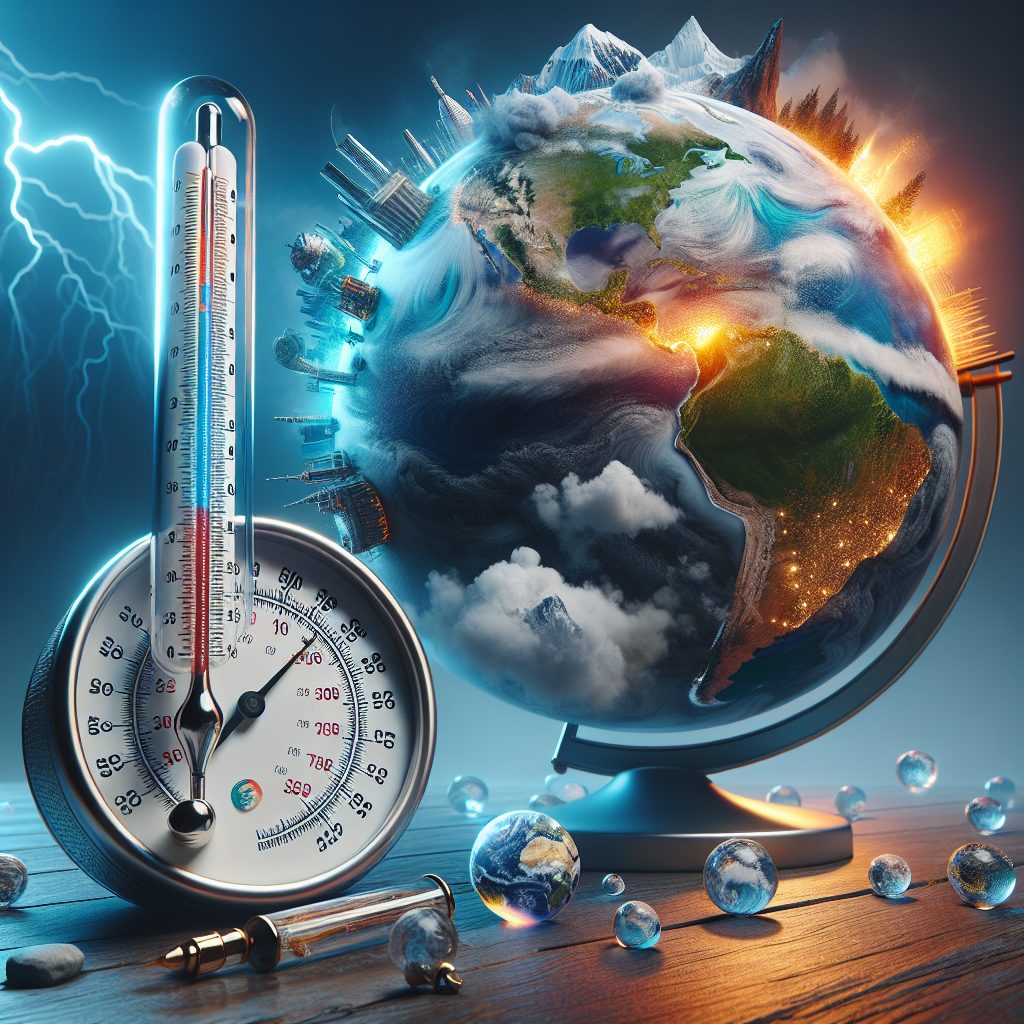Year: 2023

Unveiling the Link Between Atmospheric Pressure and Severe Weather
Atmospheric pressure is the atmospheric force exerted on objects that are in the atmosphere which is typically measured in a unit of pressure called a millibar. Atmospheric pressure is a critical indicator of weather which helps predict severe weather and the pressure readings fluctuate as a result of changing weather…

Unlocking Climate Resilience: The Power of Atmospheric Pressure
Atmospheric pressure, also known as barometric pressure, is the force exerted by the weight of air in the atmosphere. It determines the weather patterns and climate of an area. Atmospheric pressure is measured in various units, the most common of which is the kilopascal (kPa). The average global atmospheric pressure…

Unveiling the Secrets of Atmospheric Pressure in Scuba Diving
Atmospheric pressure, also known as air pressure, is the force applied to a surface by the weight of the air above it. Scuba diving, which stands for self-contained underwater breathing apparatus, is an increasingly popular recreational activity, and understanding atmospheric pressure is essential to successful dives. As deep dives will…

Air Quality Secrets: Unveiling the Impact of Atmospheric Pressure
Atmospheric pressure is the force exerted by the weight of the air. It is influenced by heat, altitude, and other factors, meaning that levels may vary in different areas. This exertion of pressure affects air quality, which refers to the state of the air surrounding us. Air quality is based…

Unlocking the Secrets of Atmospheric Pressure: Impact on Flight Physiology
Atmospheric pressure, more commonly known as air pressure, has been a key factor in the advancement of aviation science and flight physiology. The general rule of thumb is that air pressure decreases as an aircraft gains altitude. This decrease in air pressure affects both the pilot and aerodynamic performance of…

Unveiling the Secrets of Atmospheric Pressure: Impact on Storms
Atmospheric pressure is the force per unit area that is exerted by the weight of air in the Earth’s atmosphere. Pressure is expressed in bars, or units of atmospheric pressure, and is an essential component of weather and climate. Storms occur when atmospheric pressure is able to cause extreme weather…

Unveiling the Impact of Atmospheric Pressure on Climate Change
Atmospheric pressure, also known as air pressure, is a measure of the force exerted onto a surface by the weight of the air in the atmosphere. It varies depending on the altitude, temperature, and weather conditions in a particular area. Atmospheric pressure is critical in determining the weather and climate…

Breathing Techniques: Unlocking the Power of Atmospheric Pressure
Atmospheric pressure is the measure of force per unit area that is exerted on objects by the weight of air in the atmosphere. It affects everything around us, including our breathing. Atmospheric pressure is greater at sea level than at higher elevations, which affects the amount of oxygen that can…

Unveiling the Link Between Atmospheric Pressure and Geological Activity
Atmosphere pressure is a measure of how much air surrounds us and impacts the conditions on Earth. It is measured in units of force per area and is one of the most important environmental parameters that influences the Earth’s climate. Atmospheric pressure affects the air circulation and precipitation in the…

Unlocking the Secrets of Atmospheric Pressure in Oceanography
Atmospheric pressure and oceanography are an important scientific field that studies and understands the interactions between the atmosphere and the ocean. A greater understanding of atmospheric pressure and oceanography provides a better comprehension of how these two major components of Earth’s environment work together in protecting and regulating the planet’s…

Mastering Oxygen Saturation: The Ultimate Guide
Oxygen saturation is a measurement of the amount of oxygen carried by hemoglobin molecules in a person’s blood. Oxygen saturation is expressed as a percentage of the maximum amount of oxygen these molecules can carry. A person’s oxygen saturation will vary depending on whether they are at rest or in…

Sky High Secrets: How Atmospheric Pressure Affects Aviation Safety
Atmospheric pressure is a measure of the weight of the air surrounding us. Pressure can affect objects by compressing them or lifting them up. In aviation, atmospheric pressure can have a variety of implications, from determining the amount of lift generated to affecting navigation instruments. Knowing how to identify pressure…

Unlocking the Secrets: How Atmospheric Pressure Affects Human Performance
Atmospheric pressure is the force per unit area exerted by the air surrounding the Earth. It is a fundamental component of the environment and essential for life on our planet. The pressure decreases with higher elevation, which can affect the performance of athletes and others conducting physical activity in those…

Supercharge Your Health: Boost Oxygen Intake Now!
Increasing oxygen intake is an important step in improving overall health and wellbeing. Oxygen is essential for the cells of the body, as it is a key component of the energy-producing metabolic processes that keep us alive. But, due to poor diet and lifestyle, many people struggle to get enough…

Unveiling the Surprising Link Between Atmospheric Pressure and Renewable Energy
Atmospheric pressure, or barometric pressure, is the pressure exerted by the air in the atmosphere of Earth. It is a fundamental measurement related to weather and climate. The average air pressure at sea level is 101.325 kPa (kilopascals). Our atmosphere can be divided horizontally into layers based on its characteristics,…

Unlocking the Power: Oxygen Levels and Your Health
Oxygen is an essential element in our environment and has important implications on our health. Without oxygen, life as we know would cease to exist. Oxygen levels in the air affect a variety of things, both positive and negative, such as plant life, energy production, and human health. The importance…

Discover the Surprising Truth About High Altitude Oxygen Levels
At high altitudes the air is much thinner than what is experienced at sea level. This means that there is a decrease in the concentration of oxygen molecules in the air reducing the oxygen saturation of the atmosphere. This decrease in oxygen saturation is known as hypobaric hypoxia and can…

Conquer Mountains with Atmospheric Pressure: Insider Tips
Atmospheric Pressure is a well-known scientific phenomenon caused by the weight of the atmosphere pressing down on the surface of the Earth. As altitude increases, less air is above and therefore the pressure decreases. This affects mountain climbers due to the concept of barometric pressure, which relates to the atmospheric…

Discover the Surprising Link Between Oxygen Levels and Your Health
Oxygen is a vital component for the sustenance and well-being of human lives on Earth. Oxygen levels are constantly monitored by the human body to ensure it is neither too high nor too low. Changes to the amount of oxygen in the blood can have serious implications for a person’s…

Discover the Ultimate Guide to Monitoring Oxygen Levels
Monitoring oxygen levels is a vital process for healthcare providers in order to ensure the safety and health of their patients. Oxygen saturation (SpO2) is a measure of the amount of oxygen carried by the hemoglobin located in the red blood cells. It is a crucial parameter in assessing a…
